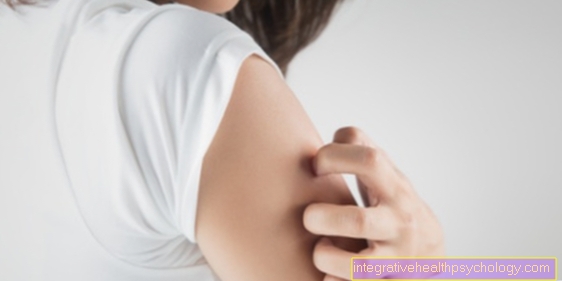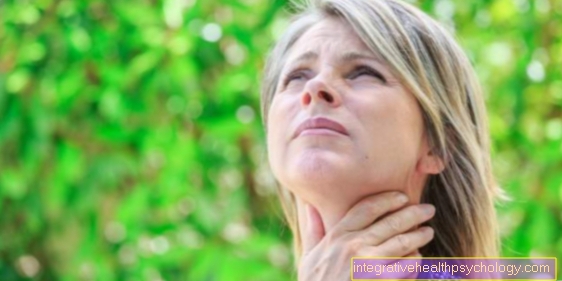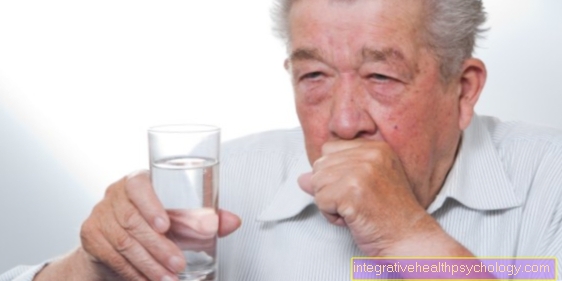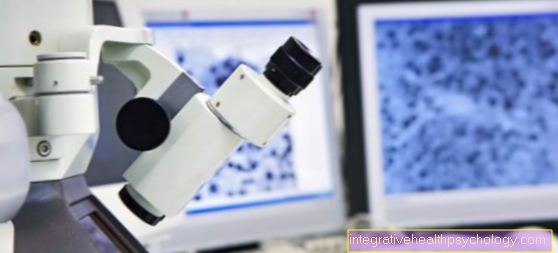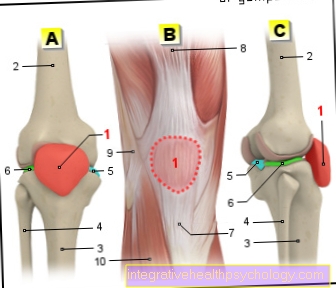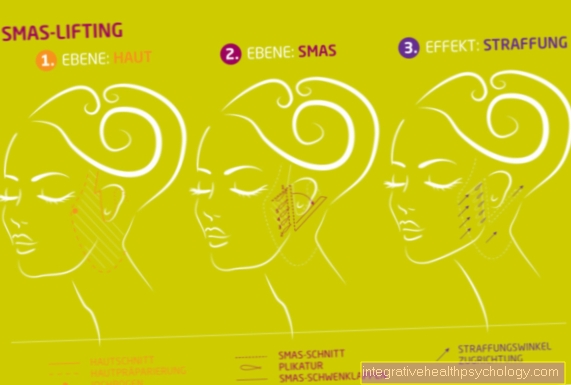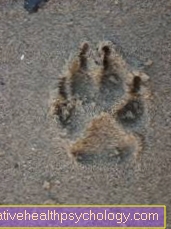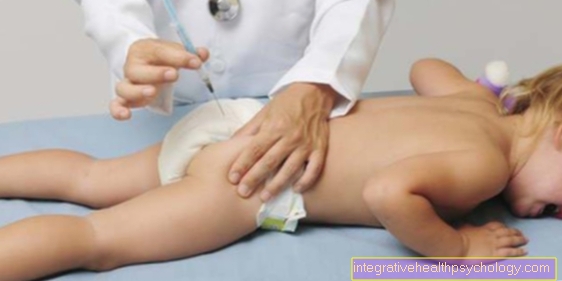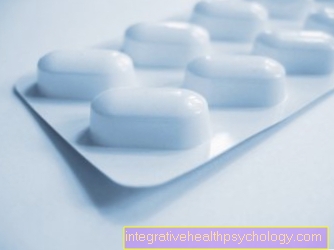Pus in the mouth
introduction
Pus pimples in the mouth are a particularly annoying matter because their location makes them difficult to treat, and they are also relatively painful. Especially when children or babies are affected, as a parent you really suffer too. But what is actually meant by pus pimples, how do they arise and what can be done about them?
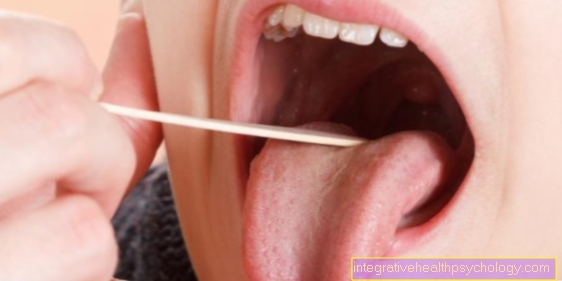
Symptoms of pus pimples in the mouth
Symptoms may include mild pain with a feeling of pressure. In toddlers and babies, the symptoms are particularly difficult to identify, as they usually only express their pain through unspecific screaming and refusing to eat. These symptoms can of course have many reasons, for example food that is too hot or too cold, stomach ache, or simply not feeling like eating. Since children do not communicate verbally, it is important to have a quick look in the mouth.
Therapy of pus pimples in the mouth
As long as the pus pimple does not represent pain or other impairment, one should wait to see whether it disappears on its own. If this is not the case, however, one can try to carefully open the pus pimple. It is important to pay attention to hygienic conditions here. This includes washing and disinfecting hands. The opening of the pus can also be left to the doctor. This can open the pus pimple with a fine device and remove it.
Should one express pus pimples in the mouth?
In general, pimples should not be squeezed out, as there is a risk that pathogens can penetrate the blood. There is also the risk that the manipulation of the pimple will increase inflammation and thus delay healing.
However, if the pain or discomfort is severe, an attempt can be made to squeeze out the pimple. The area should be disinfected after pressing. This can be done with an antibacterial mouthwash, for example. However, care should be taken to ensure that it does not contain any alcohol, otherwise it can lead to severe burning.
In addition, the disinfectant should be suitable for mucous membranes. One advantage is that the oral mucosa regenerates quickly and the squeezed out pimple - if there is no inflammation - should therefore heal quickly. Consult a doctor in the event of severe pain.
Home remedies
There are several home remedies available to aid in healing a pus pimple in the mouth. One such home remedy is garlic, because garlic has an antibacterial effect and strengthens the immune system. The garlic can be eaten or chopped several times a day for 10-15 minutes and applied to the pimple and the surrounding mucous membrane.
The ingredients of an onion also have an antibacterial effect. The onion is chopped up like the garlic and rubbed on the affected area. Chamomile can also be used, because it also has a disinfecting effect. Drunk as chamomile tea, the sips are left in the mouth longer.
Pus pimples can sometimes cause severe pain. The pimple can be smeared with clove oil to relieve pain. It is important that inflammatory actions such as smoking or drinking alcohol are refrained from until healing, as they delay healing.
Read more on the topic: Home remedies for pimples
forecast
At least regarding canker sores exists one certain familial predisposition: Around 40% of canker sore patients have a family member who also suffers from canker sores. Are typical long symptom-free intervals, alternating with several canker sores at the same time. Often enlarge the symptom-free intervals with increasing age.
Pus in the corner of the mouth
The pus pimple in the corner of the mouth develops like any other pimple on the face and should therefore be treated as such. To accelerate the healing process, the pimple can be dabbed with a mixture of healing clay and water, for example. But in the best case you shouldn't squeeze the pimple.
Furthermore, it is possible that, especially if there are several pimples on the corner of the mouth and around it, it can be a contagious rhinitis (impetigo contagiosa). This is triggered by bacteria and is one of the most common diseases in childhood. Bubbles form, which open and are then covered with honey-yellow crusts, which can be mistaken for pus. This should be treated with antibiotics that are applied directly to the affected areas.
It is also easy to confuse pus pimples with so-called angular rhinitis. These are painful tears in the mucous membrane at the corner of the mouth, which become reddish at the edge and can present with a yellowish crust in the middle. One of the most common causes is iron deficiency anemia. This is an iron deficiency in the blood, which prevents adequate red blood cells from being produced. The cause of the iron deficiency should be clarified and treated by a doctor.
Pus pimples in the mouth of babies
A distinction must always be made between pus and canker sores, as canker sores can look very similar to a pus pimple. Pus pimples are caused by bacteria and are rare in babies. If it is actually a pus pimple, it should be observed if possible. Depending on how approachable the baby is, the opening of the pimple can be considered. However, in most cases this is rather difficult due to the lack of cooperation and possible pain.
More common than the pus are typical children's diseases such as hand, foot and mouth disease, which is triggered by the Cocksackievirus A and is associated with the formation of canker sores in the oral mucous membrane. The canker sores appear as small, partly confluent vesicles that are covered with a whitish layer (fibrin layer) and therefore give the impression of pus. Often, after a few days, there is also a small speckled, nodular rash on the soles of the feet and palms. The disease is only treated symptomatically and in most cases stops automatically after a short time.
Cause of pus pimples in the mouth
The common cause of pimples is an excessive production of sebum by the many sebum glands in our body. Sebum glands are located on the hair roots and release their sebum in the area of the hair. That is why pimples can only be found on hairy areas - but mainly on the face and scalp. Since our face is particularly exposed to germs and bacteria every day, almost all of us have to struggle with pus pimples on our faces from time to time. But how do pus pimples come about in the mouth where there are neither hair nor sebum glands?
To do this, a distinction must first be made between actual pus pimples and so-called canker sores. Aphthae are small, very painful whitish-yellow spots that, in contrast to pus pimples, are flat. They have a clearly defined "edge" and burn very strongly when eating, when making certain movements with the tongue, and especially when eating foods that contain vinegar. They can also appear in several places at the same time, and then even make speaking a pain.
As already mentioned, actual pus pimples in the mouth are relatively rare because there are no sebum glands here. There are, however, the so-called Fordyce glands - harmless sebum glands that appear in "unusual" places in the body. By unusual is meant that normally no sebum glands would be expected there. They tend to manifest themselves in the genital area, but also in the mouth and throat area, and they are initially without disease value. However, if they become clogged or inflamed, they can also lead to pus pimples in the mouth. By the way, Fordyce glands appear as small, yellowish dots on the lip, tongue, or oral mucosa.
A third cause is formed by the three salivary glands on each side of our mouth: a distinction is made between the parotid gland in front of the auricle, the lower jaw, which is halfway up the lower jaw, and the sublingual gland, which is below the tongue. A blockage of one of the three salivary glands, for example by a salivary stone, leads to redness and swelling in the mouth, a painful feeling of pressure, and a reddish-whitish plug in the duct of the gland, which can appear like a pimple. To identify the exact cause of the pus pimples in the mouth, an inspection in front of the mirror is suitable. The three causes can easily be distinguished from one another. If in doubt, a visit to the family doctor can also help.
You might also be interested in: Pus in the throat
diagnosis
The diagnosis of pus pimples in the mouth is usually made at home, by parents, or rarely by the child himself. Sometimes it is also an incidental finding that is first noticed by the dentist. However, it is important to think in all directions with toddlers and babies, and to look into their mouth from time to time. Maybe the refusal to eat is not because of the food itself, but because every bite hurts. Older children can already communicate this, and toddlers and babies are most likely to express their pain by screaming!
prophylaxis
The prophylaxis for pus pimples in the mouth depends on the cause. The sebum-producing Fordyce glands can lasered away become. This also happens often without symptoms, pure for cosmetic reasons. It is one short interventionthat a dermatologist can do.
At recurring canker sores the situation is more complicated: Since the exact cause unknown one can only speculate what prevents the annoying companion: In the suspicion stand Iron, zinc, folic acid, or vitamin b12 deficiency. But also a Streptococcal infection, or one Gluten intolerance can be the trigger. The substances mentioned above should be used for prophylaxis ingested sufficiently with food be, and possibly at least temporarily abstained from products containing gluten become. A recurrence the canker sores would then become a further search for the cause entail.
Liquid helps against salivary stones, and above all to keep the saliva flowing. The best way to do this is by eats something sour every now and then, or the Salivary glands massaged from the outside. In general, one should good oral hygiene and brushing your teeth regularly be respected - this way you don't give bacteria a chance. Especially Toddlers and babies are particularly on the Required help from parentsbecause they cannot yet clean their mouth by themselves. The milk teeth may fall out, but poor oral hygiene can also have many other consequences than holes in the teeth.


